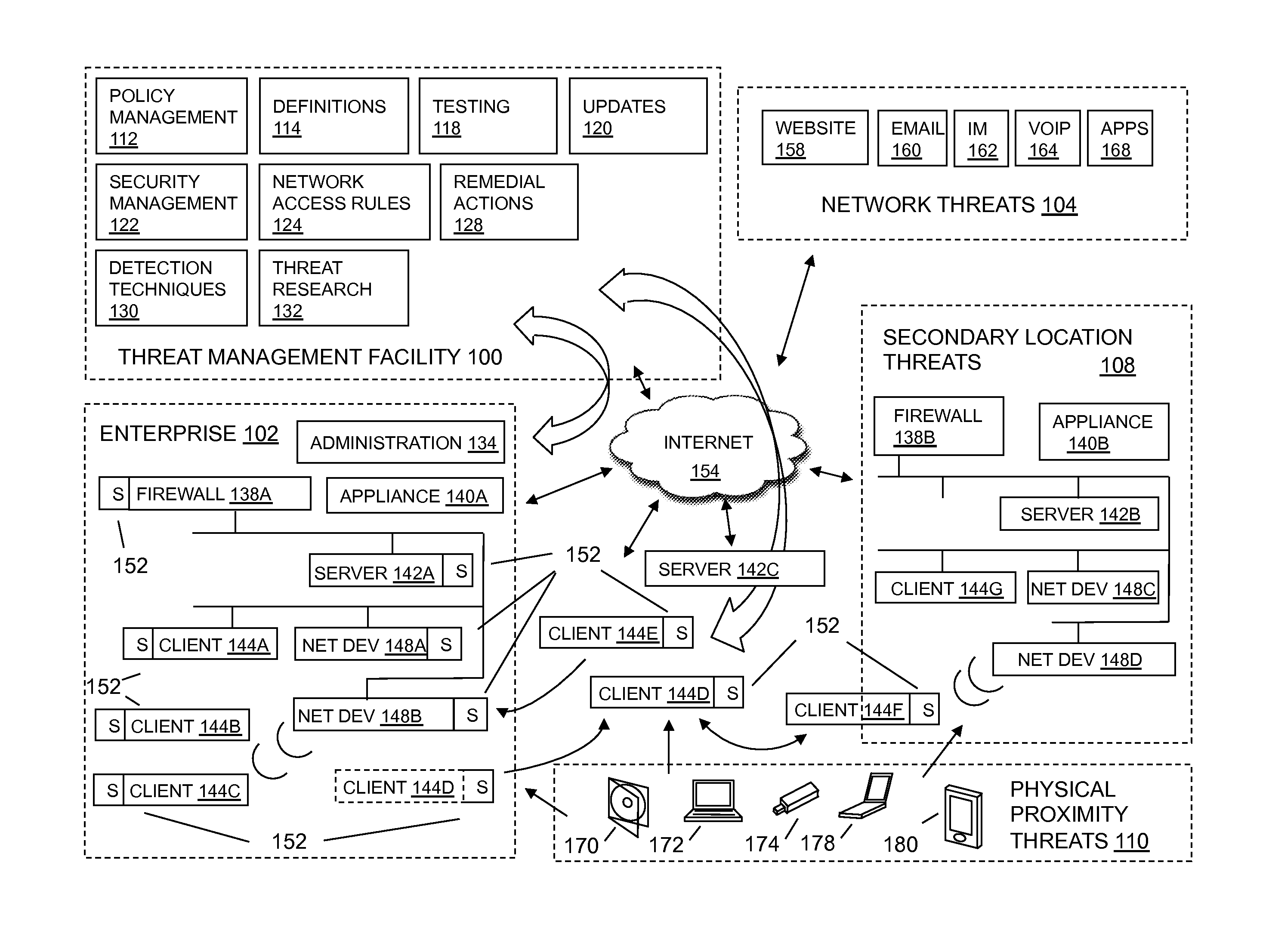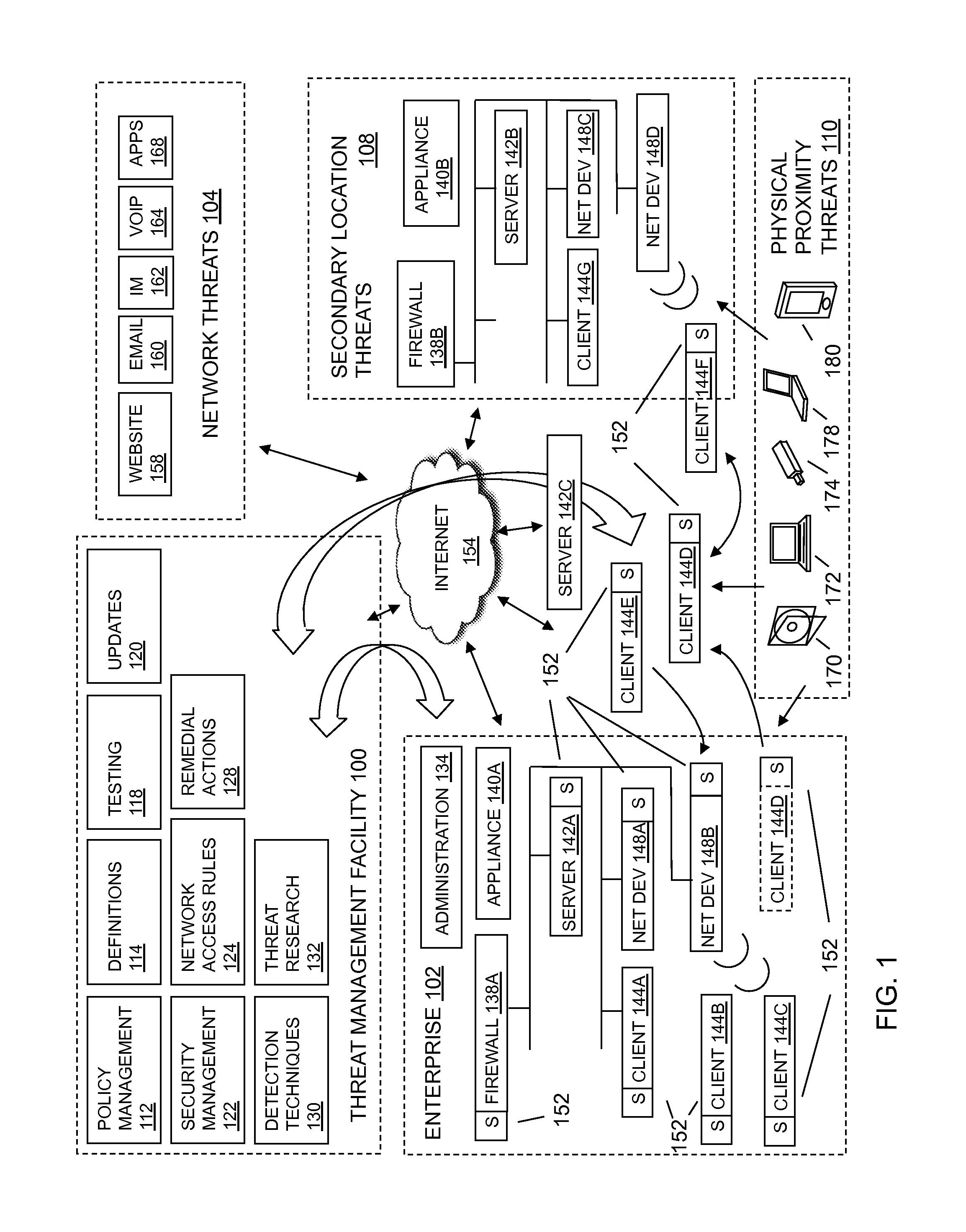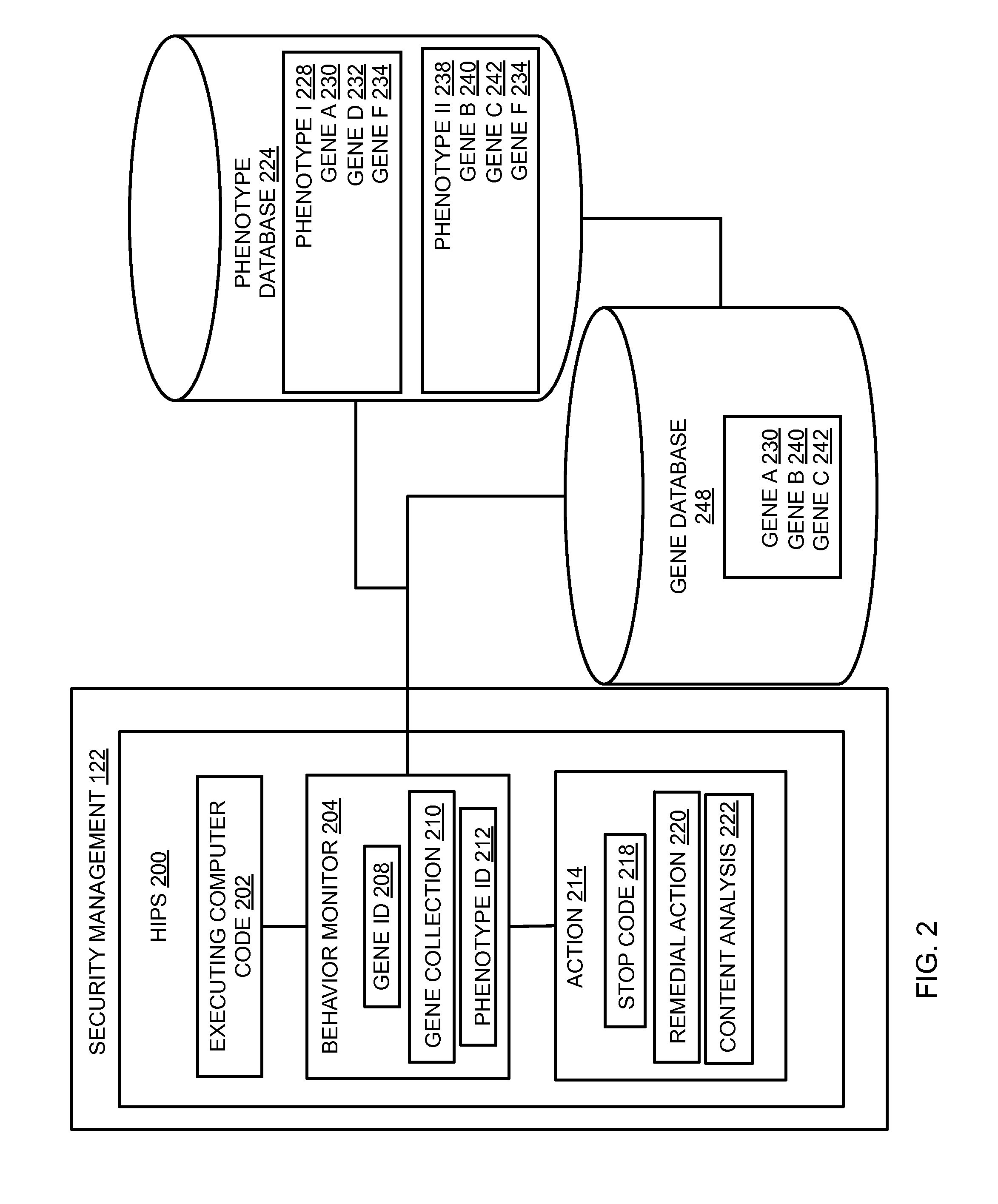Host intrusion prevention system using software and user behavior analysis
a technology of intrusion prevention system and user behavior analysis, applied in the field of behavior-based threat detection, can solve the problems of increasing ineffectiveness of conventional deterministic content-based analysis mechanism, limited remediation ability of implementation, and difficulty in driving simple remediation
- Summary
- Abstract
- Description
- Claims
- Application Information
AI Technical Summary
Benefits of technology
Problems solved by technology
Method used
Image
Examples
Embodiment Construction
FIG. 1 depicts a block diagram of a threat management facility providing protection to an enterprise against a plurality of threats. An aspect of the present invention relates to corporate policy management and implementation through a unified threat management facility 100. As will be explained in more detail below, a threat management facility 100 is used to protect computer assets from many threats, both computer-generated threats and user-generated threats. The threat management facility 100 is multi-dimensional in that it is designed to protect corporate assets from a variety of threats and it is adapted to learn about threats in one dimension (e.g. worm detection) and apply the knowledge in another dimension (e.g. spam detection). Corporate policy management is one of the dimensions for which the threat management facility can control. The corporation may institute a policy that prevents certain people (e.g. employees, groups of employees, types of employees, guest of the corp...
PUM
 Login to View More
Login to View More Abstract
Description
Claims
Application Information
 Login to View More
Login to View More - R&D
- Intellectual Property
- Life Sciences
- Materials
- Tech Scout
- Unparalleled Data Quality
- Higher Quality Content
- 60% Fewer Hallucinations
Browse by: Latest US Patents, China's latest patents, Technical Efficacy Thesaurus, Application Domain, Technology Topic, Popular Technical Reports.
© 2025 PatSnap. All rights reserved.Legal|Privacy policy|Modern Slavery Act Transparency Statement|Sitemap|About US| Contact US: help@patsnap.com



